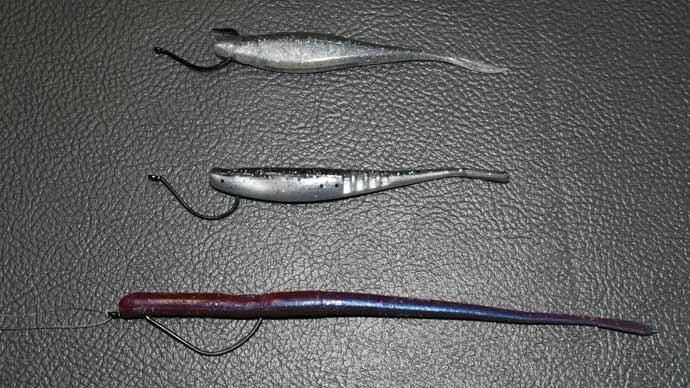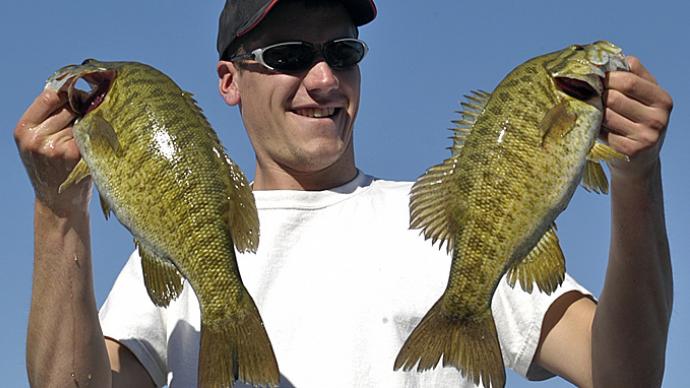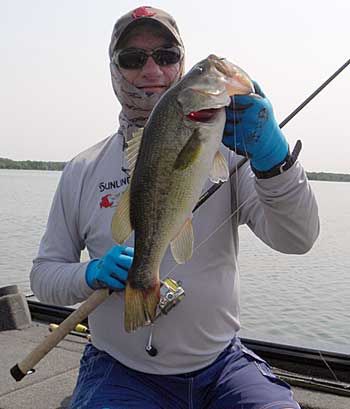
Some fishermen say they heard about it in the mid-'90s, while others admit it was the late 90s. Whatever the answer, dropshot fishing has changed the bass finesse game ever since. I can remember my first time seeing Shin Fukae fishing a dropshot in an FLW event. Unfortunately, he did not win but finished in the top 10. That was my first glimpse of this new technique called dropshot, and little did I know it would soon become a dominating force in finesse.
At first, it was a slow start for this new tactic to gain traction until Aaron Martens took it under his wing. It was Aaron that put dropshot fishing on the map here in the US and made it into the force it is today. Aaron passed away well before his time, but he has left his undeniable mark on finesse fishing forever.
What Has Changed Through The Years
There have been changes in the dropshot world that have changed how we dropshot today. The most significant factor was introducing braided line in dropshot fishing, and you can again credit Aaron for this. When dropshot fishing started, it was noted as a cold-water tactic. When the bass were sitting schooled in deeper water, a dropshot was a viable way to keep your bait in front of bass to trigger strikes.
Line choice in the initial stage of dropshot fishing was monofilament. Then a few years later, fluorocarbon started to take hold and became the line many preferred. It was not long after that Aaron chose braid as his main dropshot line. It was one of the first turning points that started to mold dropshot fishing into what it is today.
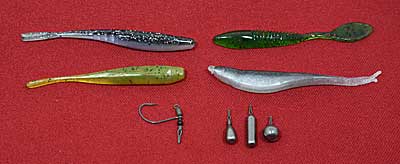
Through the years, tackle companies have shown their support of this technique. Many of them asked their pros for bait suggestions and started to bring new baits to the market. However, if you take a closer look at the baits offered to dropshot fishermen today, it matches many of the other techniques in the fishing market.
Hooks improvements were to follow. Key hook companies followed suit of the bait companies and brought market-specific dropshot hooks to fill the needs demanded by anglers.
One of the most significant issues facing dropshot fishermen is line twists. So Gamakatsu turned to Shin Fukae to help them solve this problem. After a few different ideas, they gave dropshot fishermen a product called Swivel Shot. It's a hook that rotates around a wire shaft, helping eliminate line twists. It also has a line clip at the bottom to clip your weight dropper line, making it easy to adjust your dropper length.
Speaking of sinkers, lead was the leader at the dropshot’s introduction, but now tungsten has taken over market share as fishermen’s top choice.
New Standards
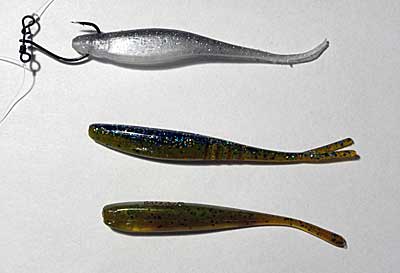
The equipment used to dropshot fish has also changed through the years. I use a 7ft Denali Lithium Pro spinning rod teamed with a Bass Pro large spool spinning reel (I'm sorry to say that this reel is discontinued). The reason for the larger spooled reel is reduced line twist. I spool my reel with 12lb to 16lb Sunline Asegai braid. I team this with 8lb to 10lb Sunline FC leader line to match water conditions. I use the Gamakatsu Swivel Shot hooks, which come in both traditional dropshot and worm hooks. I stock both in my dropshot mix.
Leader Length
Leader length is a factor that needs your attention. What depth are the fish sitting? You can get this answer from your electronics. During colder months, bass hold closer to the bottom than in summer months. Therefore, I usually fish a 12- to 18-inch leader length in the summer months, but in the colder water during Spring and Fall, I fish a 3- to 6-inch leader.
Bait Hooking Orientation
Bait hooking orientation has changed through the years. What used to be one or two rigs has now expanded. Nose hook was the standard in the early years of dropshot fishing and still is a mainstay. When wacky rigging expanded into bass fishing, many anglers made this addition on the dropshot with impressive results.
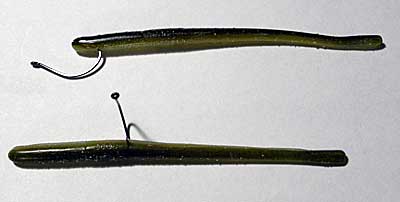
The newest rig came from Aarons Martens and was called the “Gilly rig.” You take your worm and run your hook about a ½" from the tip of the worm. Then, as you're lifting the worm, the water pressure pushes down on its short side, giving the long section of the worm a swimming action as you lift the worm and let it fall.
Power Shot
Power shot is a dropshot on steroids and is a welcome addition to the dropshot family. The rigging is different for a power shot and is often fished on a baitcaster. I use a 7ft Denali Lithium Pro medium-action baitcaster, teamed with a 6.3:1 Lew’s BB-1 spooled with 20lb Sunline Asegai Braid. I use a 15-inch 10lb to 12lb Sunline Maboroshi leader. To help eliminate line twists, I also use a Gamakatsu Swivel Shot Worm hook. Finally, I will add a 1/4oz to 3/8oz dropshot sinker at the end of my dropper.
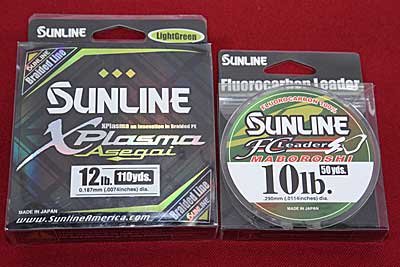
Fish your power shot like you would like a Carolina rig. First, make your cast and let your bait settle to the bottom. Then, reel your slack and drag the bait along the bottom back to the boat. Reel down when you feel the rod load up and use a sweep hook set. If you try to use a regular hookset, you'll lose more bass than you'll hook using a sweep set.
The power shot allows you to cover water faster, working key areas quicker and helping you find fish. Once you have them located, you can grab your dropshot rod and give them a different, more refined look with traditional dropshot tactics.
I hope these refined dropshot tactics help you expand how you think and use a dropshot today. Many things have changed over the years, and to stay up with tactics, you'll have to change a few things. For sure, you need to include dropshot fishing in your tactics if you want to also stay competitive in this game.


